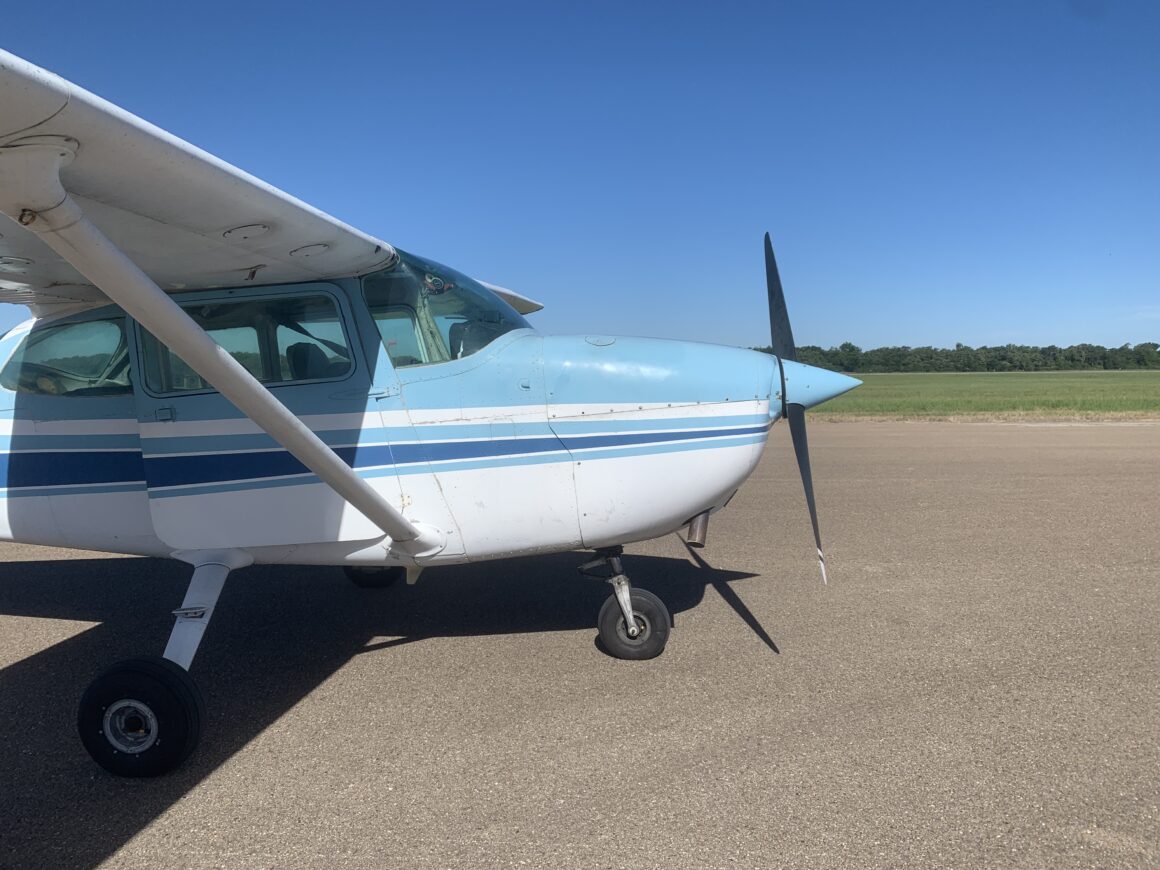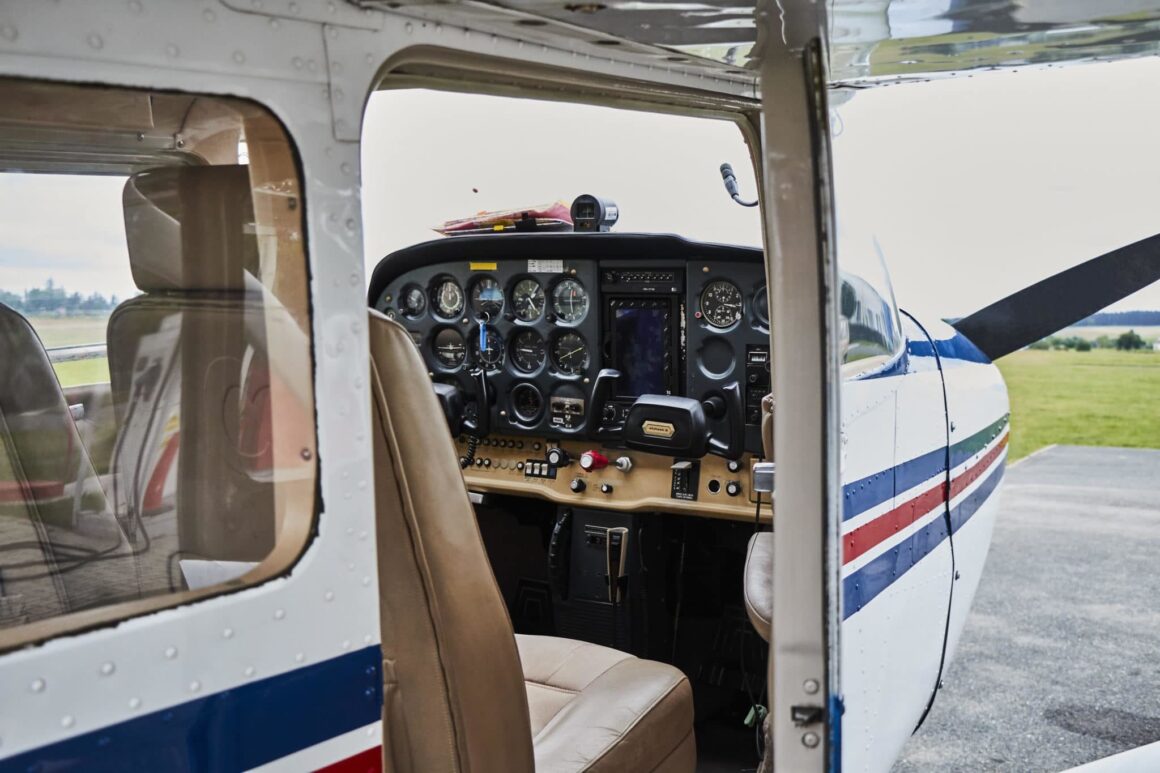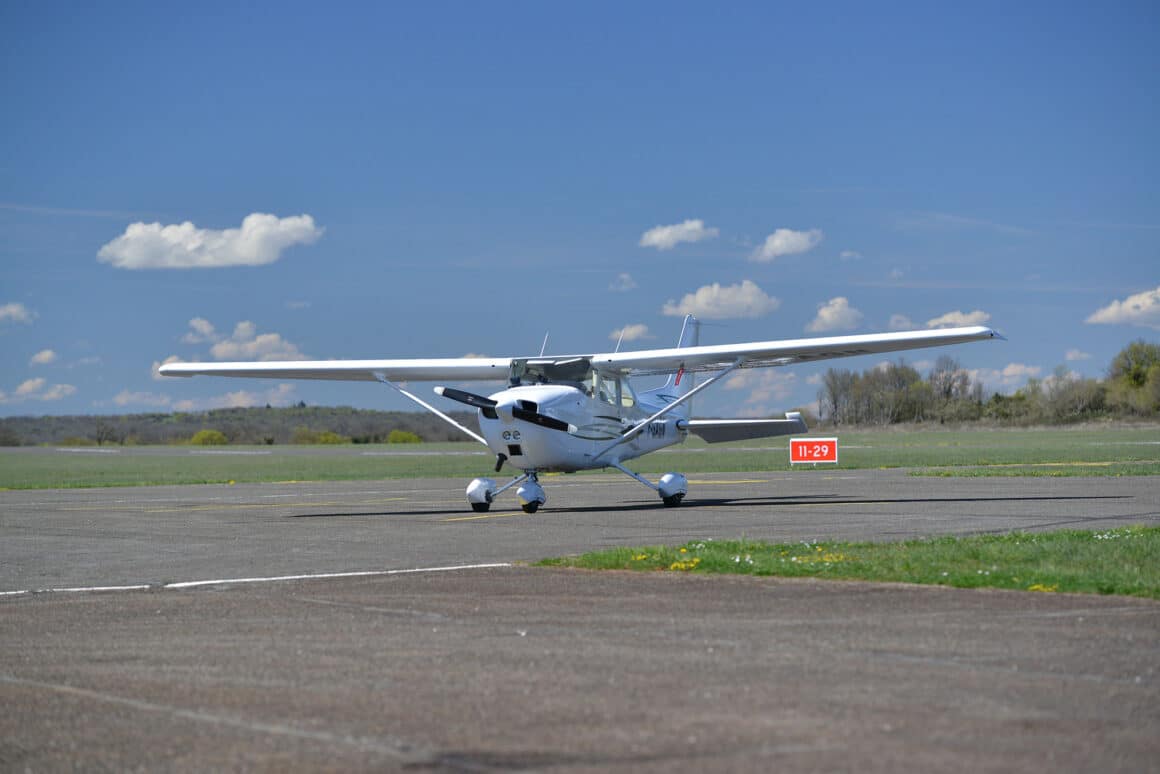Check Ride – Part 3: Wait, We Hit a Wingtip?
It was Tuesday, 4 August 2021. I was scheduled for 1200 at a towered airport inside the Class Bravo airspace. I hadn’t flown in airspace that busy before. My home airport is an un-towered, single-runway strip in Class G. FAA regulations require that a licensed pilot fly with me into the Class Bravo. My instructor was out of town, so he arranged for a private pilot working toward a commercial license to take the right seat.
We took off thirty minutes later than planned because of unexpected delays at the fueling pump. My co-pilot helped with the radio calls as we entered the Class Bravo, and we landed at the airport without any problems. 1145. The examiner was due to arrive within the next ten minutes. I followed the air marshal’s hand signals and taxied to a stop outside the FBO. Shutdown complete.

“Oh my God,” co-pilot’s said, his head suddenly swiveling across the cockpit, “I think we hit their wingtip.” I looked outside my window. My stomach hit the floor. Sure enough, our left wingtip was lodged on top of the right wingtip of the plane chocked beside us. You’ve got to be kidding me!
We jumped out and inspected the damage. Couldn’t we lift our wingtip to keep pressure off the other plane? Nope—insurance won’t let us touch the evidence. My co-pilot took pictures while the air marshal called her manager. I could do nothing except look at my watch. 1148. The examiner was due to arrive within mere minutes by that time. There’s no better way to kick off the last ten minutes of a check ride than with a ground collision. I was screwed!
The FBO manager screeched up in a golf cart and called his senior manager. The senior manager rolled up in an SUV and called the mechanic. I waited inside the FBO and tried to think positive thoughts. Ten minutes in the traffic pattern, and I would be a private pilot. Ten minutes. Who would be my first passenger? Where would I go on the first day trip? I watched the window for the examiner. It was now 1155.

It was 1210, and still no examiner. My co-pilot came into the FBO and reported that everything is set for the check ride. The planes traded a thin line of paint, but the mechanic had managed to rub off most of the residue with clay. Both aircraft were still airworthy. The FBO managers were wrapping things up now. Bullet dodged—almost.
“Is that your airplane?” my examiner walked into the FBO two minutes later. He saw the hubbub ten seconds before the FBO managers and the mechanic split ways. “Yes sir,” I fessed up. He paused. I made peace with flying home with a pink slip. “You were following the same air marshal who’s out there now?” he replied, “She got me really close to another plane as I was taxiing in. A good reminder to always check your wingtips.” I blinked, shocked. Had he just show me mercy? The woman behind the desk apologized and said they would take full liability for the incident. I garbled something I hoped was courteous. Thankfully, my examiner was on a time crunch.
“Ready to go?” he asked. “I need to see two good landings, and we’ll be all set.” I nodded. “But first I have to catch up on one phone call real quick,” he said. It was the first thing that day that didn’t take me by surprise. I followed him down the hall into a small conference room.
We sat across from each other at a round wooden table. I flew through the traffic pattern in my head while the examiner took the call. 1,900 feet on downwind, carburetor heat on, gas from both tanks, undercarriage set, mixture rich, seatbelts secure, lights on, ten degrees of flaps abeam touchdown point, extend downwind leg if he asks for a no-flap landing.
I paid no attention to the phone conversation. I was visualizing myself stabilizing the approach on final when I noticed something was wrong. My examiner’s face was turning as dark and stormy as the clouds on the first day of the check ride. He hung up, dialed a new number, and put the phone back to his ear.

“Can you tell me what the hell is going on?” he yelled. I executed a mental go-around. He snapped the phone shut and put it down on the table. There was a full-blown Texas summertime storm in his eyes.
“I’m sorry, but I can’t do your check ride today,” he said. “My DPE designation has been suspended.” I blinked. What could I say? I’m sorry for your loss? That’s a crying shame? You couldn’t have waited ten minutes to make that call?!
“I’m so sorry to hear that,” I responded lamely. I felt exponentially sorrier on the flight home with my co-pilot, cruising through the Class Bravo with a thin white scratch on the underside of our left wingtip and no private pilot’s license. The examiner thought the issue was just a routine complaint. I had no trouble believing it, but that did nothing to change the fact that I landed at my home airport ten minutes short of my license.
“I should have this all cleared up by Thursday,” my examiner texted me later that night. Two minutes later, another text pinged: “But reach out to this other examiner just in case. I’ll forward her contact info.” I shot the new examiner a text. “Hi, yes I should be back in town sometime after 19 August,” she responded. 19 August, two weeks from the next day. I was stuck in a holding pattern. Again.

The clock ticked. Sixteen days since the start of the exam. If I didn’t finish the check ride before 29 August, I would run over the FAA’s 30-day deadline and would have to restart the test from scratch. I tried not to think about how much that would cost—or how lucky I would have to be to find an examiner who could fit me in before I left for graduate school overseas at the end of September. The pressure was on.
I followed up with my examiner every day, helped out the mechanic at my home airport for a week, took a few cross-country day trips, and made myself dizzy doing no-flap touch-and-goes. With the number of takeoffs and landings I logged in one morning, I could have earned four PPL’s.
On Thursday, 14 August, my first examiner told me to schedule the rest of the check ride with the other examiner. “Don’t worry about the cost,” he said, “I’ll cover it with the original check.” The issue with his designation was not going to be resolved before the FAA’s 30-day timer ran out. I thanked him and texted the other examiner. She was fully booked through the end of October, but she had one thirty-minute slot the next Wednesday. This would be my last shot. Dear Lord, I prayed, please don’t let me mess up.
